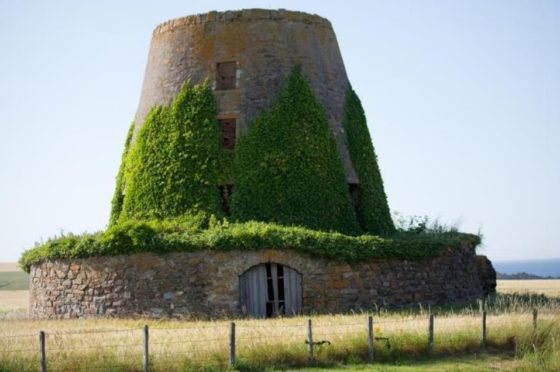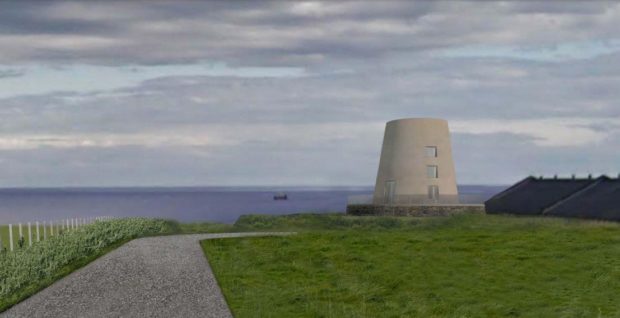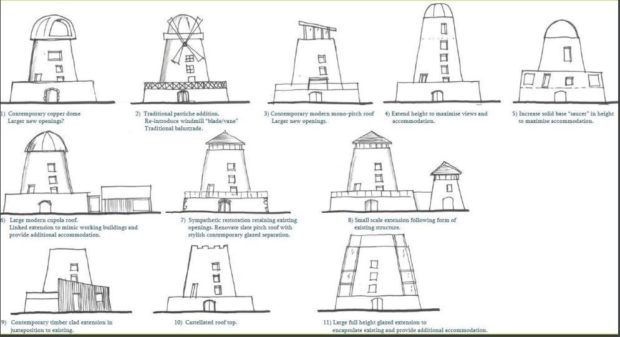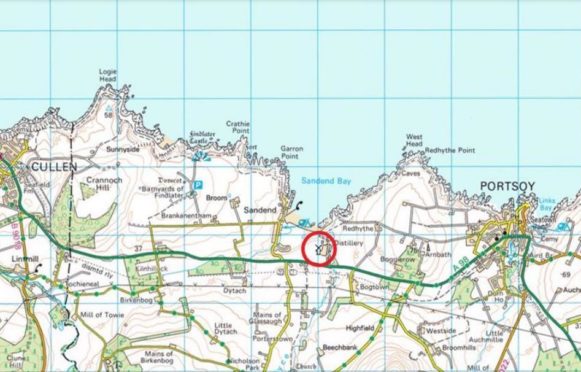A “nationally significant” north-east windmill could soon be converted into one of the region’s most eye-catching homes.
The idea of living inside a windmill may feel like something from the world of fiction, with Camberwick Green’s Windy Miller and crime-solving magician’s assistant Jonathan Creek two notable examples.
But the ancient Glasshaugh structure, near Sandend, is being eyed up as an unusual addition to the local property market.
Developers Muiresk Home Farm Ltd reckon the picturesque “hidden gem” could be transformed into a stunning two-bedroom and three-storey home.
And they fear that, if it is left to the elements for much longer, it could topple over.
Though the B-listed and now ivy-covered windmill has long since lost its four sails, it boasts amazing panoramic views of the North Sea.
It can be seen from the A98 Portsoy to Cullen road – where it lies next to Glenglasshaugh Distillery.
Built from Pictish remains
General James Abercrombie built the monument after returning home from his military career fighting in the American wars of independence between 1689-1763.
He took up his seat in parliament and picked up the running of the family estate at Glassaugh.
Windmills were not that common in the north-east then due to the availability of water power, but Major General Abercrombie decided that wind was the way to go.
He built his windmill by recycling a supply of building materials from a bronze age burial cairn and the structure, known locally as Nanny Abercrombie’s windmill or “the cup and saucer”, was born.
It was partially restored in the 1970s by the former Banffshire Coast Restoration Society and sold in 2019.
In its heyday, the enormous windmill stood four-storeys high and with a tapering tower topped with white sails.
However, like its 19th century Sussex counterpart, which was home of fictional TV sleuth Jonathan Creek, the north-east windmill could now be revived and transformed into a home if plans drawn up with the help of Huntly architect Annie Kenyon are approved.
Saving the building
The sketches, available to view the plans on the Aberdeenshire Council planning portal, propose the creation of a drying area on the ground floor, with a living and kitchen space above and en-suite bedrooms on the second and third floors.
The planning statement reads: “It is proposed to save this building by carrying out a high quality and sympathetic restoration to provide a unique and interesting home.
“It is proposed to respect the existing structure in its entirety – to avoid any extensions or new openings and the accommodation has been designed to suit all existing widths, heights and volumes.
“Entering on the ground floor a large set of timber double storm doors give shelter and define the entrance to the impressive structure from the south elevation. A large open plan hall with a staircase and void will welcome on arrival.
“An impressive internal feature stair will wind around the external wall to the principal level which is fully open plan with kitchen, dining and living facilities.”
Fears about tower collapsing
The document adds: “The vision of the proposal is to provide this historic building with a viable alternative use, whilst respecting and protecting its historic fabric and general historic significance wherever possible.
“The historical significance of the windmill was recognised and protected with its
designation as a Scheduled Monument on September 11, 1980.
“Although the scheduling documents provide no reasoning for the decision to designate the site, the designation in itself implies that the windmill is nationally significant.
“This proposal is extremely unique and comprises the redevelopment of a historic building that has been in place since the late 18th century.
“Sandend Windmill has not been the subject of active management for a number of years and is expected to decay further if intervention is not permitted in the near future. The obvious potential outcome of that would be the future collapse of the tower.”
For the plans to become reality, Historic Environment Scotland will have to consent to work on the windmill taking place.
Developers say talks with the organisation are “currently ongoing”.



